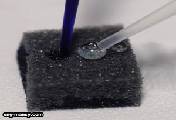CARBON FIBERS AND THEIR APPLICATION IN CIVIL ENGINEERING 1 from 7

Over the ages, as we have evolved, so has our engineering O and researching skill sets.
Civil engineering being the very origin of engineering, has also witnessed many transformations and breakthroughs in the construction technology thereby leading us to the successful current times.
Even today, we are constantly innovating, researching and developing technology in pursuit of sustainable future.
Throughout this evolution, researchers and engineers have found themselves in constant search for new and better materials to optimally manage the performance-cost tradeoff in the construction sector.
Many new raw materials have been
discovered and many ground- breaking composites have been developed, of which not all but some have proved to be a phenomenal success.
Carbon fiber is one of these materials, which is usually used in combination with other materials to form a composite.
The properties of carbon fibers, such as high stiffness, high tensile strength,
Low weight, high chemical resistance, high temperature tolerance and low thermal expansion, makes them one of the most popular materials in civil engineering.
Possessing strength up to five times that of steel and being one-third its weight, we might as well call it ‘the superhero’ of the material world.
Carbon Fibers: Composites and
properties
Each carbon filament thread is a bundle of many thousand carbon filaments.
A single such filament is a thin tube with a diameter of 5-8 micrometers and consists almost exclusively of carbon.
Made of pure carbon in form of graphite, they have low density
and a negative coefficient of Longitudinal thermal expansion. Carbon fibers are produced by the PAN (polyacrylnitrile) or the pitch method.
The PAN method separates a chain of carbon atoms from PAN through heating and oxidation while the pitch method pulls out graphite threads through a nozzle from hot fluid pitch.



